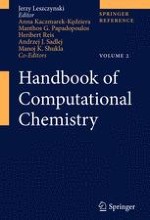2012 | Buch
Über dieses Buch
The role the Handbook of Computational Chemistry is threefold. It is primarily intended to be used as a guide that navigates the user through the plethora of computational methods currently in use; it explains their limitations and advantages; and it provides various examples of their important and varied applications.
This reference work is presented in three volumes. Volume I introduces the different methods used in computational chemistry. Basic assumptions common to the majority of computational methods based on molecular, quantum, or statistical mechanics are outlined and special attention is paid to the limits of their applicability.
Volume II portrays the applications of computational methods to model systems and discusses in detail molecular structures, the modelling of various properties of molecules and chemical reactions. Both ground and excited states properties are covered in the gas phase as well as in solution. This volume also describes Nanomaterials and covers topics such as clusters, periodic, and nano systems. Special emphasis is placed on the environmental effects of nanostructures.
Volume III is devoted to the important class of Biomolecules. Useful models of biological systems considered by computational chemists are provided and RNA, DNA and proteins are discussed in detail. This volume presents examples of calcualtions of their properties and interactions and reveals the role of solvents in biologically important reactions as well as the structure function relationship of various classes of Biomolecules.
Anzeige
